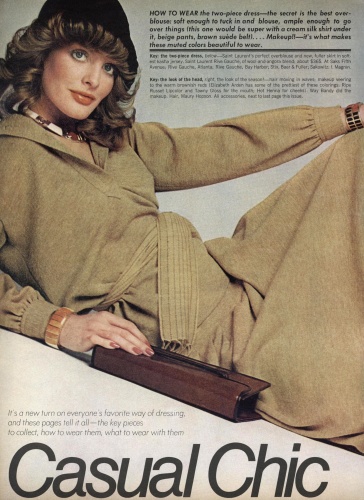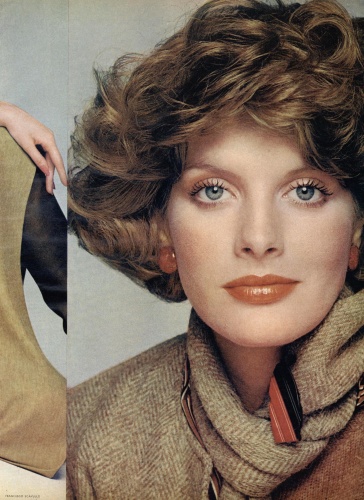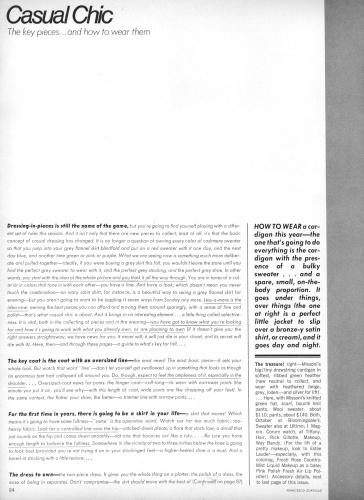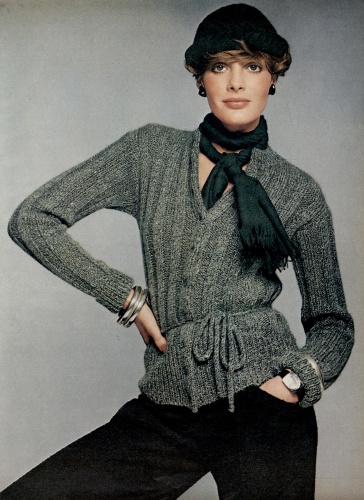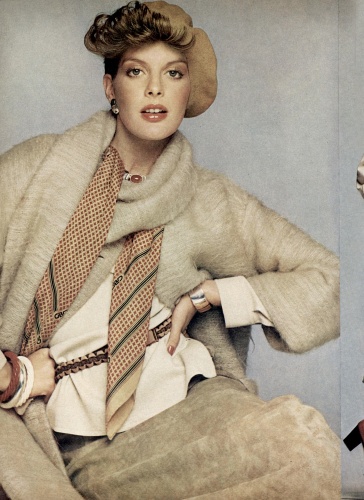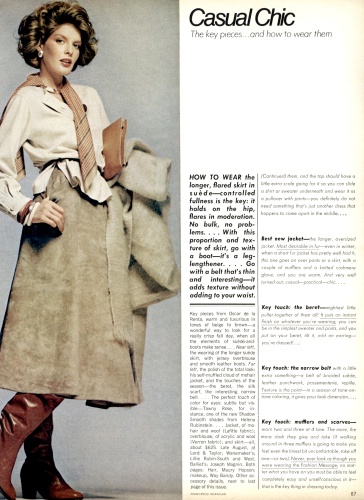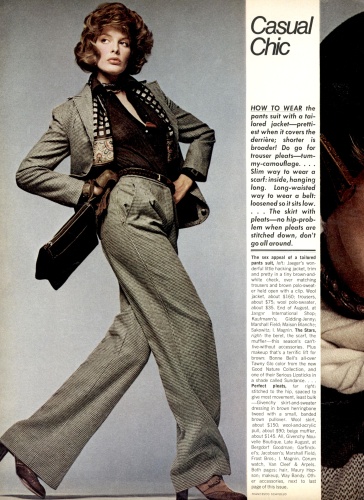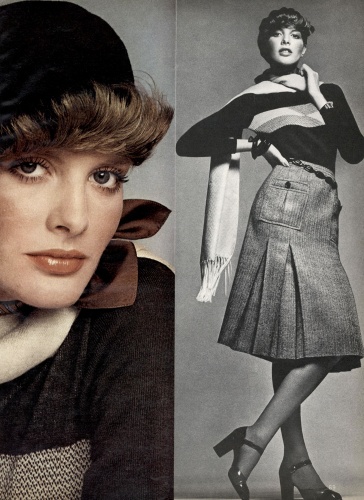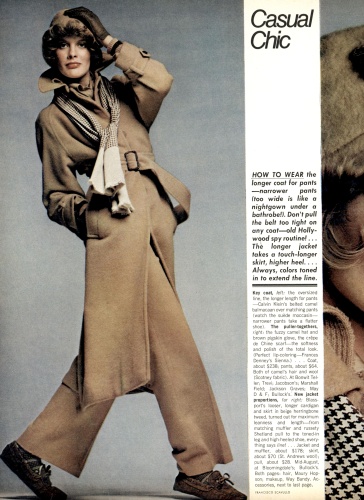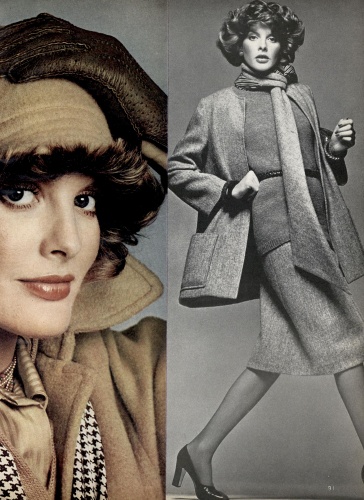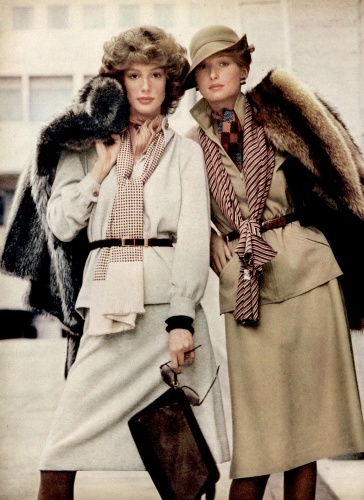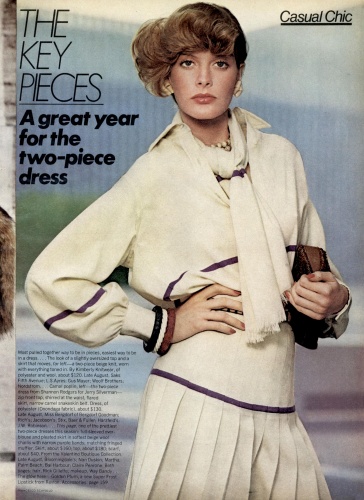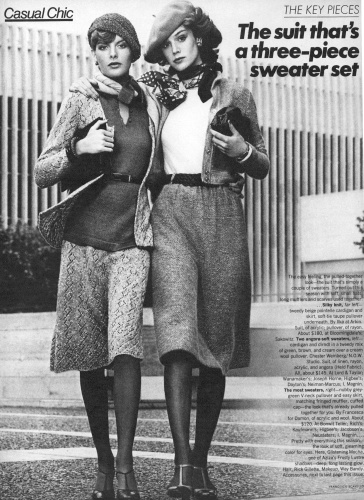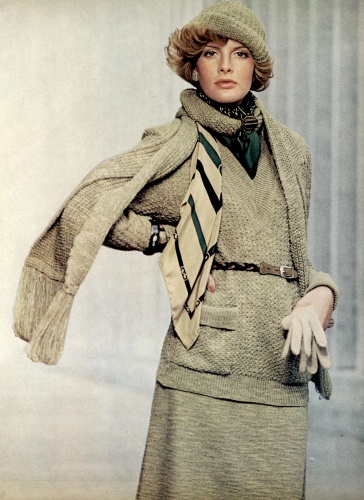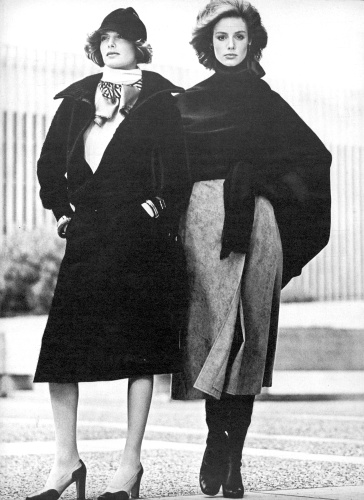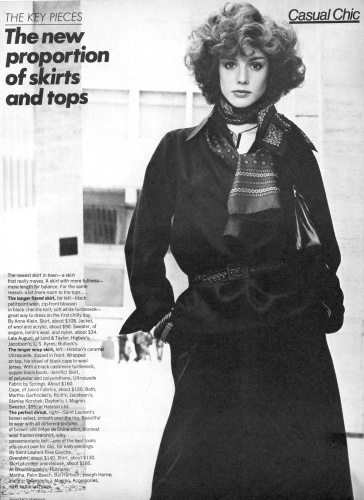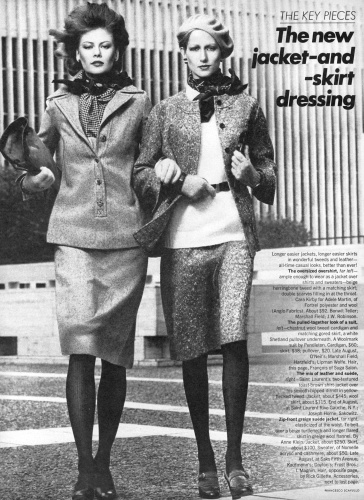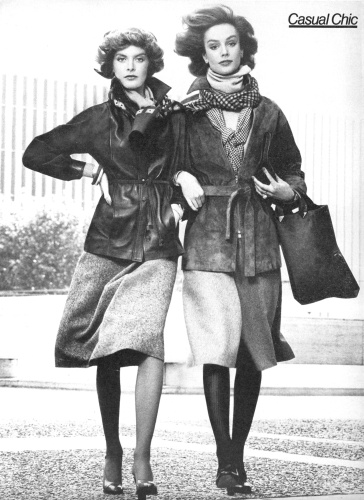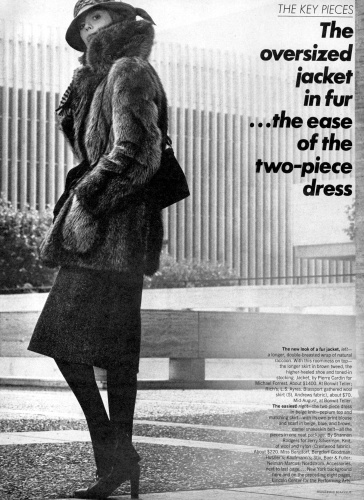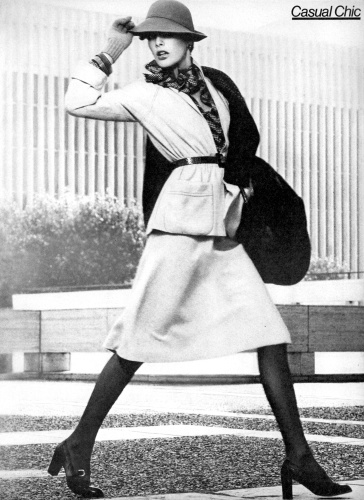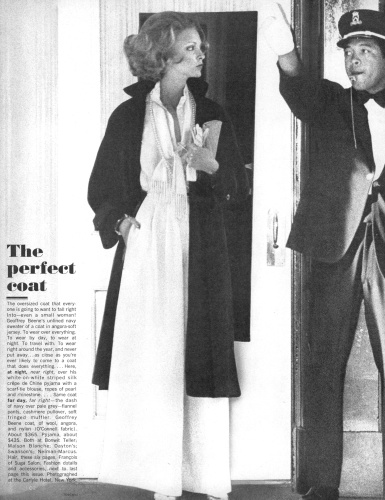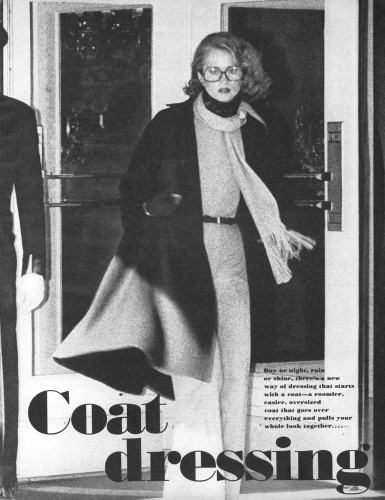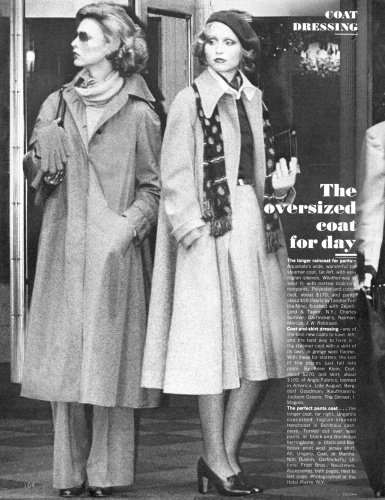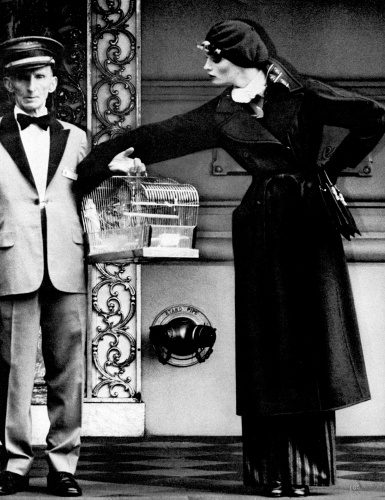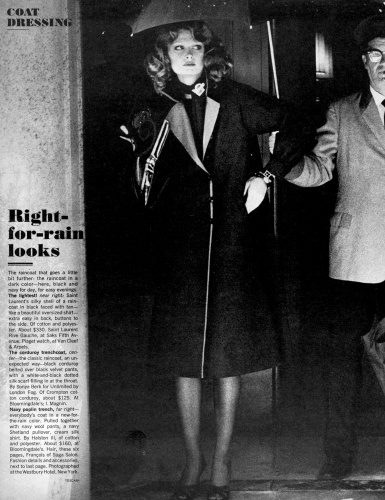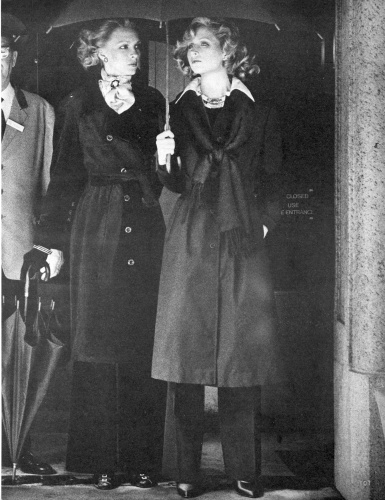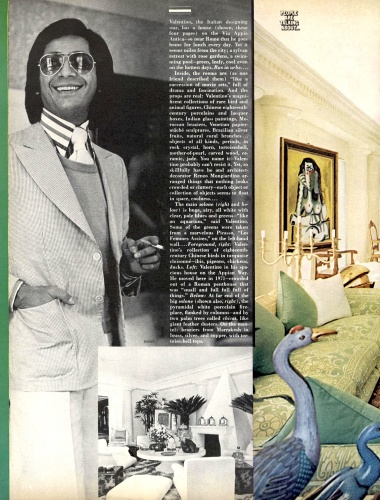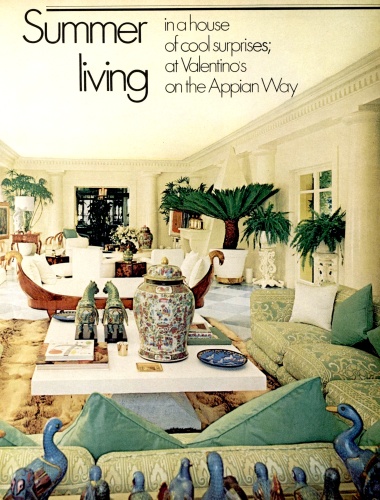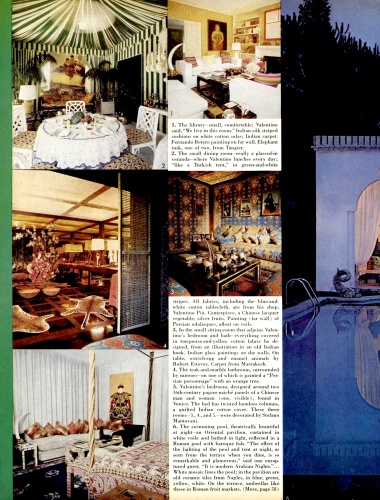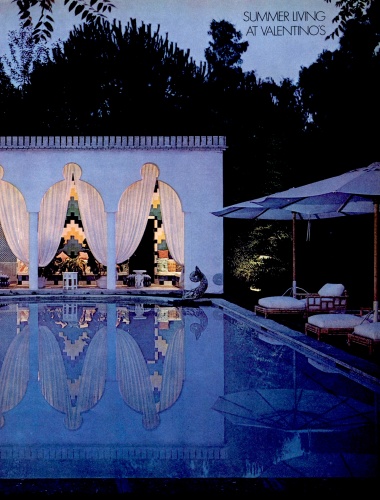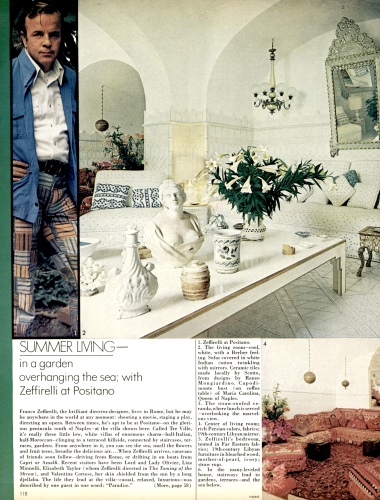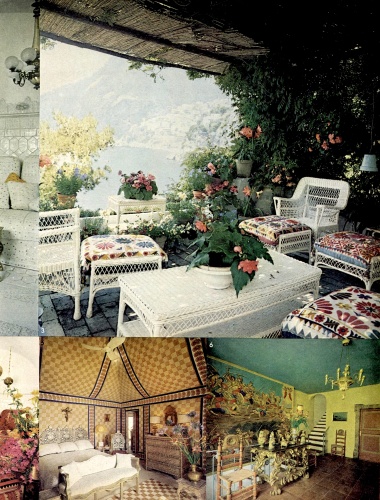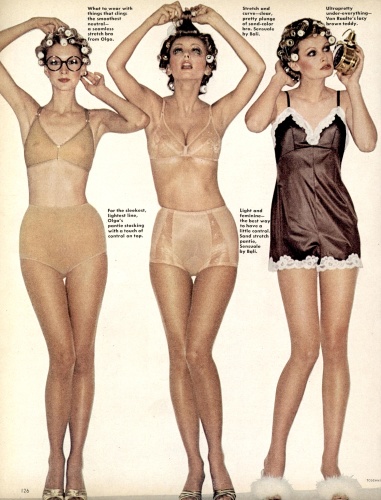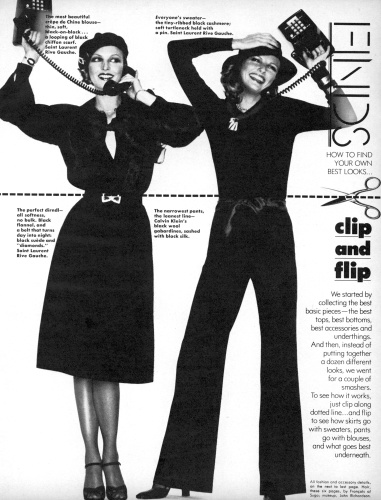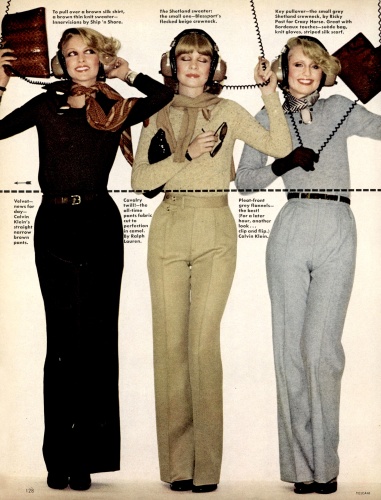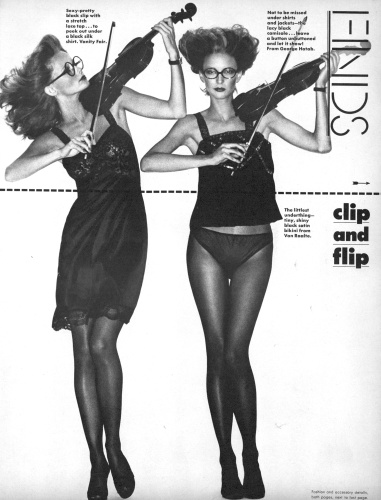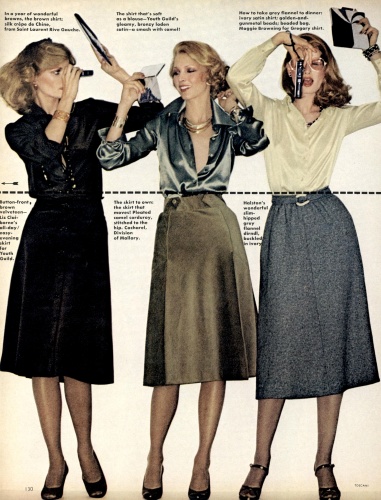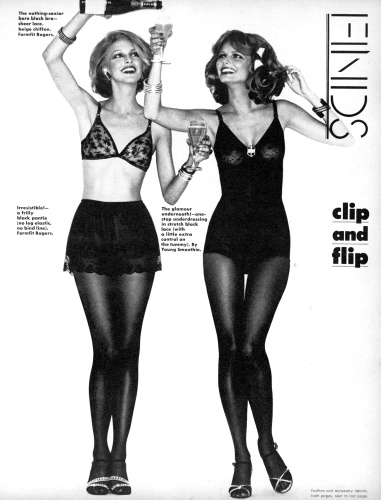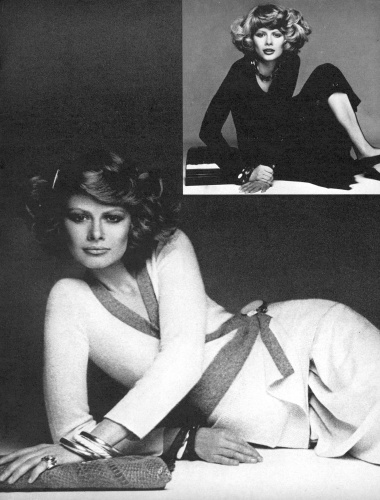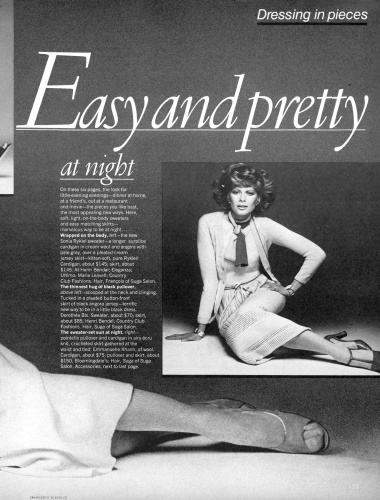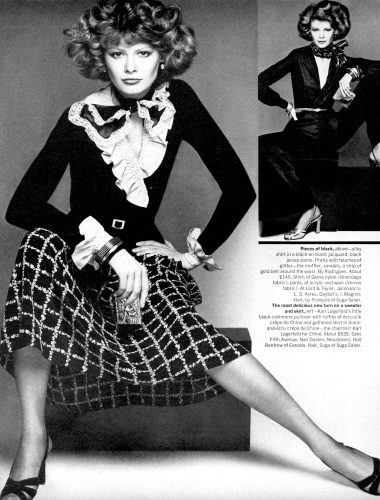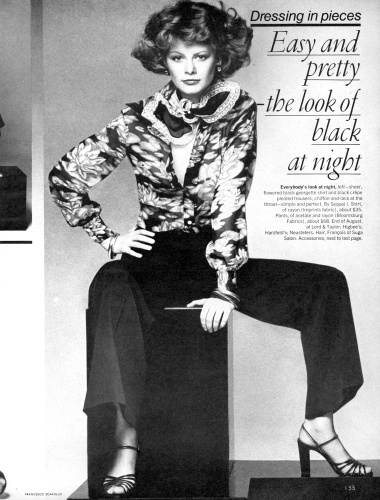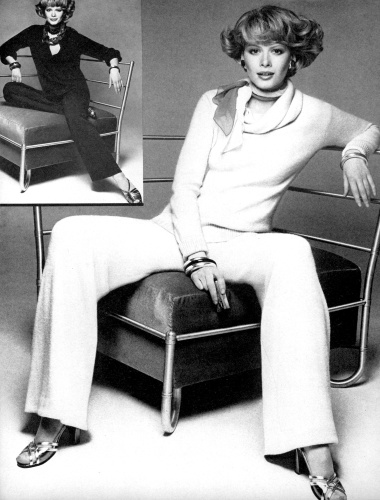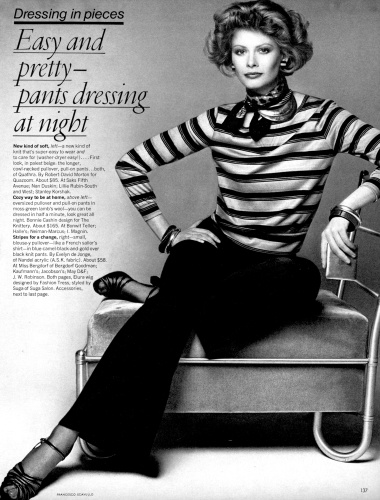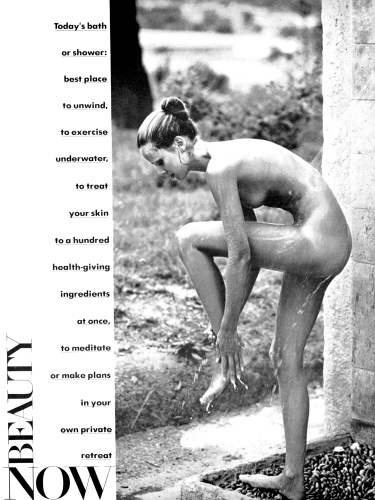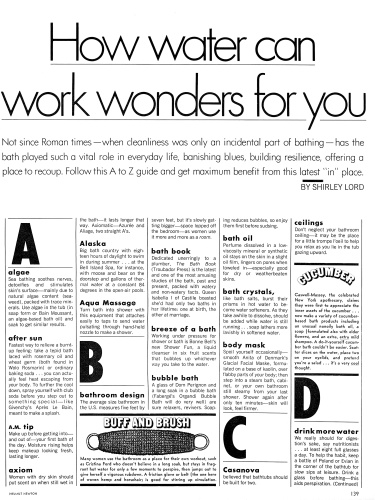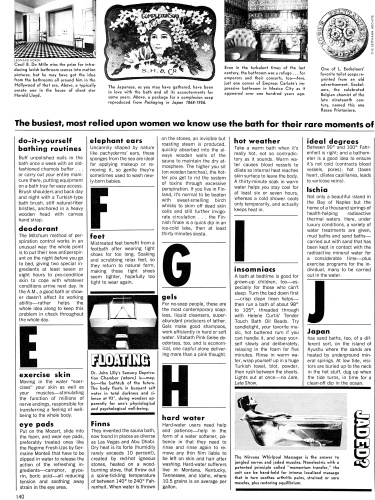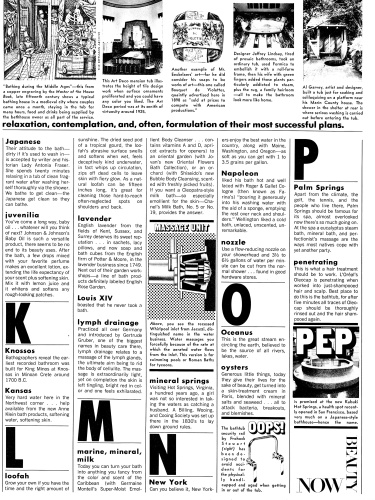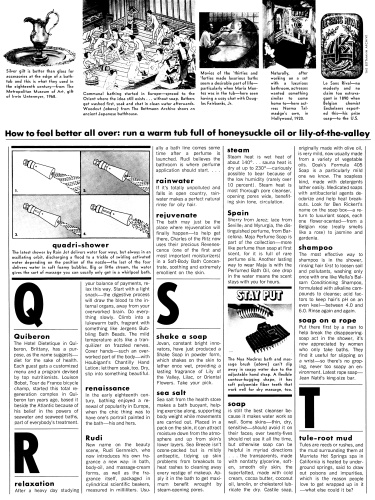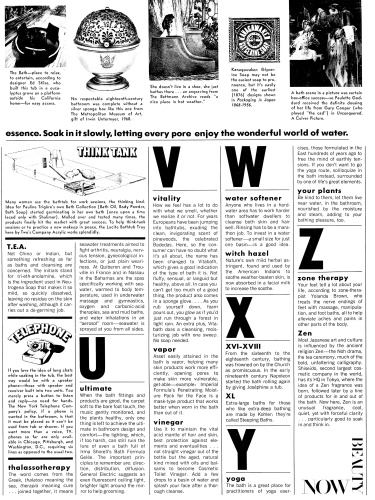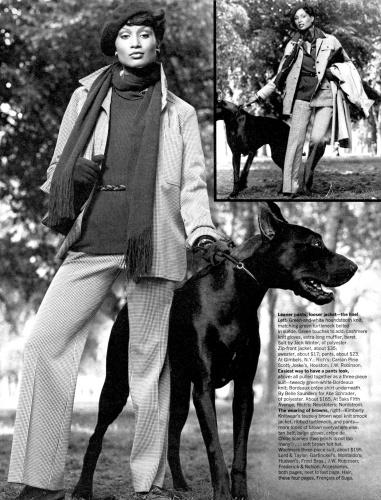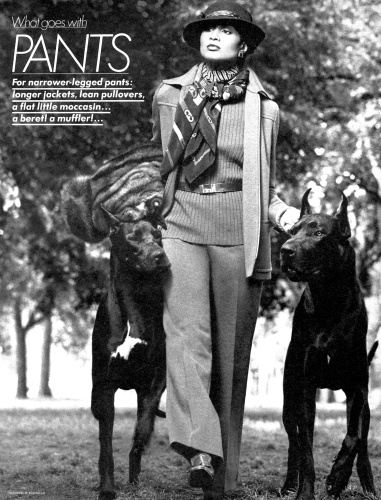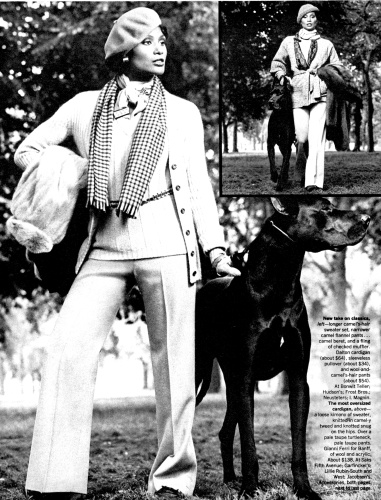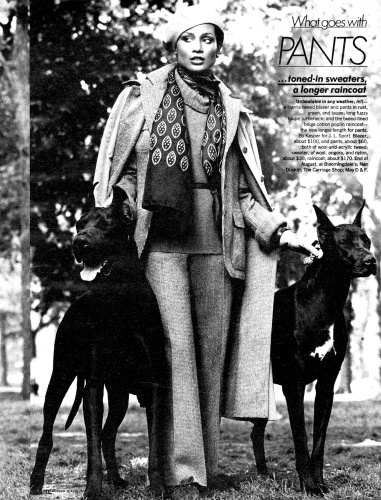You are using an out of date browser. It may not display this or other websites correctly.
You should upgrade or use an alternative browser.
You should upgrade or use an alternative browser.
US Vogue August 1974 : Beverly Johnson by Francesco Scavullo
- Thread starter justaguy
- Start date
- Joined
- Jul 24, 2010
- Messages
- 86,319
- Reaction score
- 52,205
Beverly Johnson recalls her Vogue cover
In August 1974, she became the first black woman to be featured on the front of the magazine.
August 16, 2009|Caroline Ryder
Beverly Johnson was a 21-year-old ingenue sleeping on a mattress on the floor of her midtown Manhattan apartment when she went into the photo studio with legendary photographer Francesco Scavullo 35 years ago this month.
The atmosphere, she remembers, was "magical." "You could kind of feel it in the air during the shoot," says Johnson. "I knew it was going to be a good picture."
But the rising model was stunned when she learned that an image from the session -- of her in a simple, powder blue sweater and a Mona Lisa smile -- would become the cover of Vogue in August 1974, making her the magazine's first black cover model.
Johnson became a poster child for the American civil rights movement practically overnight, her name mentioned in the same breath as that of the Rev. Jesse Jackson (who was, all of a sudden, calling her to discuss race relations in America).
"Everyone was like, 'Do you understand the significance of this?' " recalls Johnson, now 56. "They were making the comparisons with Jackie Robinson and what he did for the baseball league." At the time, she says, she was only vaguely aware of what they were talking about.
"When the magazine came out I had no idea at all that I was the first black woman to be on the cover of Vogue," she says. "I was just overjoyed to be on the cover because that's what you strive for as a model. That's when you know you have arrived."
Before the Vogue shoot, Johnson had already made a name for herself at Glamour, which had been featuring black cover models since 1968. Editors there were enamored of her wholesome yet modern "woman next door" look. "They were fascinated because the response was always positive when they put me on their cover," Johnson says.
"Usually they got hate mail if a black model was on the cover." She still has a note from the late, great Ruth Whitney (Glamour's editor in chief for 31 years) congratulating her on her ability to transcend race barriers.
But Johnson had no illusions about the latent racism in her business -- things simply were different if you were a black woman in fashion. On shoots Johnson often felt like "the token black," she says. Hairstylists often "didn't have a clue about black hair -- I was always teaching the white hairdressers and makeup artists how to do me. There were no black hairdressers and makeup artists." On catalog shoots, her white counterparts would earn more, even though Johnson's photos often would be the ones that sold the most product.
As she grew more and more successful, some of her contemporaries, such as Lauren Hutton, would express their discomfort with the uneven playing field. "They thought I should be getting paid the same as them," Johnson says. "But there was a lot of resistance with advertisers. By speaking my mind I didn't make a lot of friends -- but I was hot, and I was selling, so I could say things that others couldn't at that time."
Johnson still has vivid memories of learning from her agent, Wilhelmina Cooper (owner of the Wilhelmina Models agency), that she'd landed on the Vogue cover. The young model immediately raced down to the local news kiosk to buy a copy and, in her excitement, forgot to bring any money with her. "I told the guy at the kiosk, 'It's me on the cover, I live right down the street, I promise you I'll bring you the money!' And he said no." Johnson ran all the way back home and scooped up whatever spare change she could find so she could buy the magazine.
Weeks later, the significance of her achievement started to sink in.
"I felt angry at first -- like, why hadn't a black woman appeared on the cover of Vogue already? As a woman of color in America, I had heard about prejudice, but I didn't know the depth and the breadth of it. And then I felt a profound sense of responsibility. I grew up, that's what I did. Overnight, I became an adult."
Today, Johnson (who also became the first black woman on the cover of French Elle and still models), revels in how many women of color appear in mainstream magazines every month. She takes pride in First Lady Michelle Obama's role as an American fashion icon. But she's all too aware of the contemporary phenomenon known as "black out" -- designers refusing to use black models on their runways. That indicates to her there's much work to be done before the fashion industry can call itself a bastion of equality. "A lot of working models today voice the same complaints that I voiced when I was a working model," Johnson says. "There's still a long way to go."
latimes.com
In August 1974, she became the first black woman to be featured on the front of the magazine.
August 16, 2009|Caroline Ryder
Beverly Johnson was a 21-year-old ingenue sleeping on a mattress on the floor of her midtown Manhattan apartment when she went into the photo studio with legendary photographer Francesco Scavullo 35 years ago this month.
The atmosphere, she remembers, was "magical." "You could kind of feel it in the air during the shoot," says Johnson. "I knew it was going to be a good picture."
But the rising model was stunned when she learned that an image from the session -- of her in a simple, powder blue sweater and a Mona Lisa smile -- would become the cover of Vogue in August 1974, making her the magazine's first black cover model.
Johnson became a poster child for the American civil rights movement practically overnight, her name mentioned in the same breath as that of the Rev. Jesse Jackson (who was, all of a sudden, calling her to discuss race relations in America).
"Everyone was like, 'Do you understand the significance of this?' " recalls Johnson, now 56. "They were making the comparisons with Jackie Robinson and what he did for the baseball league." At the time, she says, she was only vaguely aware of what they were talking about.
"When the magazine came out I had no idea at all that I was the first black woman to be on the cover of Vogue," she says. "I was just overjoyed to be on the cover because that's what you strive for as a model. That's when you know you have arrived."
Before the Vogue shoot, Johnson had already made a name for herself at Glamour, which had been featuring black cover models since 1968. Editors there were enamored of her wholesome yet modern "woman next door" look. "They were fascinated because the response was always positive when they put me on their cover," Johnson says.
"Usually they got hate mail if a black model was on the cover." She still has a note from the late, great Ruth Whitney (Glamour's editor in chief for 31 years) congratulating her on her ability to transcend race barriers.
But Johnson had no illusions about the latent racism in her business -- things simply were different if you were a black woman in fashion. On shoots Johnson often felt like "the token black," she says. Hairstylists often "didn't have a clue about black hair -- I was always teaching the white hairdressers and makeup artists how to do me. There were no black hairdressers and makeup artists." On catalog shoots, her white counterparts would earn more, even though Johnson's photos often would be the ones that sold the most product.
As she grew more and more successful, some of her contemporaries, such as Lauren Hutton, would express their discomfort with the uneven playing field. "They thought I should be getting paid the same as them," Johnson says. "But there was a lot of resistance with advertisers. By speaking my mind I didn't make a lot of friends -- but I was hot, and I was selling, so I could say things that others couldn't at that time."
Johnson still has vivid memories of learning from her agent, Wilhelmina Cooper (owner of the Wilhelmina Models agency), that she'd landed on the Vogue cover. The young model immediately raced down to the local news kiosk to buy a copy and, in her excitement, forgot to bring any money with her. "I told the guy at the kiosk, 'It's me on the cover, I live right down the street, I promise you I'll bring you the money!' And he said no." Johnson ran all the way back home and scooped up whatever spare change she could find so she could buy the magazine.
Weeks later, the significance of her achievement started to sink in.
"I felt angry at first -- like, why hadn't a black woman appeared on the cover of Vogue already? As a woman of color in America, I had heard about prejudice, but I didn't know the depth and the breadth of it. And then I felt a profound sense of responsibility. I grew up, that's what I did. Overnight, I became an adult."
Today, Johnson (who also became the first black woman on the cover of French Elle and still models), revels in how many women of color appear in mainstream magazines every month. She takes pride in First Lady Michelle Obama's role as an American fashion icon. But she's all too aware of the contemporary phenomenon known as "black out" -- designers refusing to use black models on their runways. That indicates to her there's much work to be done before the fashion industry can call itself a bastion of equality. "A lot of working models today voice the same complaints that I voiced when I was a working model," Johnson says. "There's still a long way to go."
latimes.com
- Joined
- Jan 21, 2004
- Messages
- 4,896
- Reaction score
- 2
I love!
There is so much to admire & enjoy about this edition of Vogue. Firstly the cover is simply sublime. Beverly Johnson is very beautiful & it is no wonder she is a supermodel. Whenever I see her on the TV - I always think she could still be in the magazines / advertisements today & be great. The composition of the cover as well shows "how to do a cover 101" Grace Mirabella should give some private lessons to today's editors.
I also love the styling of the 70s shoots - the hats; scarves; jewellery etc is just so schmick- luv it!
I also love the styling of the 70s shoots - the hats; scarves; jewellery etc is just so schmick- luv it!
- Joined
- Jul 24, 2010
- Messages
- 86,319
- Reaction score
- 52,205
Agree with you 100%, Kelly, on the "how to do a cover." This cover is just perfection in my book. Everything about it is flawless. The accessories Polly used in editorials just added to the pure beauty of the layouts.
So true about the styling - I adore the jewellery of the early 70s editorials. When I read Grace Coddington's bio & she dissed Polly's style in the late eighties- I was very dismayed - so brattish. It was such poor form. This cover is perfection - that's why it hasn't been forgotten - imho. Way Bandy's makeup is flawless - a true artist. I could rave on all day.
- Joined
- Jul 24, 2010
- Messages
- 86,319
- Reaction score
- 52,205
I'm right there with you on Way Bandy! Kevyn Aucoin came pretty close, but there's never going to be another Way Bandy.
Yes, I was a bit miffed when I read Grace's comment on Polly, but tried to get past it because I love Grace and I absolutely loved reading her bio.
Yes, I was a bit miffed when I read Grace's comment on Polly, but tried to get past it because I love Grace and I absolutely loved reading her bio.
I'm right there with you on Way Bandy! Kevyn Aucoin came pretty close, but there's never going to be another Way Bandy.
Yes, I was a bit miffed when I read Grace's comment on Polly, but tried to get past it because I love Grace and I absolutely loved reading her bio.
The bio was a piece of fluff - very superficial & no goss! Except she doesn't like Carre Otis - LOL! Personally I think the best fashion read is "the ugly side of fashion" by Michael Gross. It was totally fab!!!
KateTheGreatest
Well-Known Member
- Joined
- Mar 15, 2011
- Messages
- 5,450
- Reaction score
- 831
Similar Threads
- Replies
- 26
- Views
- 10K
- Replies
- 33
- Views
- 17K
- Replies
- 27
- Views
- 5K
- Replies
- 27
- Views
- 13K
- Replies
- 22
- Views
- 12K
Users who are viewing this thread
Total: 2 (members: 0, guests: 2)
New Posts
-
-
Matthieu Blazy - Designer, Creative Director of Bottega Veneta (5 Viewers)
- Latest: Monsieur Cristobal
-
-
-


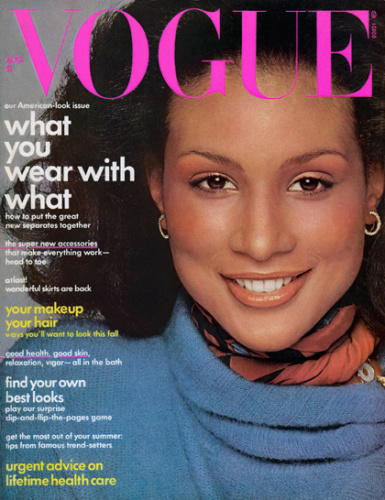
 Excited to see the rest of the content.
Excited to see the rest of the content.
